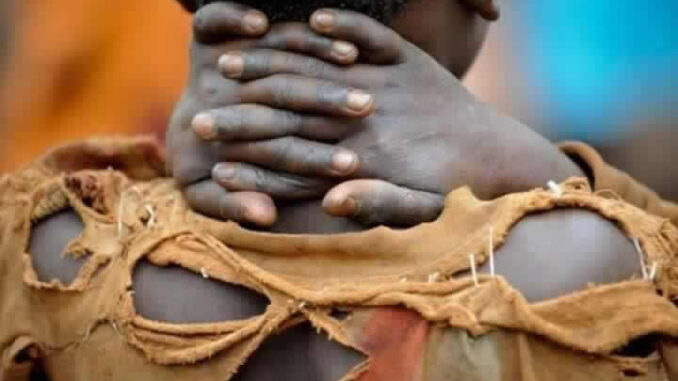
A report highlighting Africa’s status as having the lowest energy consumption per capita among the world’s continents should remind the President, Major General Muhammadu Buhari (retd.), that Nigeria’s energy sector remains chaotic and urgently needs fixing. Hawilti, an investment research agency, gave the damning reminder recently. As the continent’s biggest economy and its most populous, Nigeria’s power conundrum inhibits its economy and is a global embarrassment. Buhari and his successor should refocus attention on this crucial sector.
Hawilti notes that the average electricity use of a sub-Saharan African resident is “lower than that of a household fridge in the United States.” That is paradoxical because Africa does not lack natural resources that should impact positively on its people. Nigeria for instance, holds 2.9 per cent (per World Population Review) of the global gas reserves. Others too boast healthy natural assets. Combined, African countries produce more than six per cent of the world’s natural gas supply and almost one-tenth of proven reserves. But sadly, many of the continent’s people lack access to cooking gas.
Beyond gas shortages, power outages, fuel scarcity also abound in Africa. In Nigeria, despite an abundance of fossil and renewable energy resources, citizens still experience acute energy poverty. Many Africans either lack access to modern energy sources or struggle with inadequate, depreciating supply and poor quality.
Nigeria has gas reserves of 209.5 trillion cubic feet, says the Nigerian Midstream and Downstream Petroleum Regulatory Authority, and crude oil reserves of 36.89 billion barrels, says the United States Energy Information Administration, the world’s ninth and 11th largest reserves respectively.
Energy Capital & Power, an investment platform, estimates that combined, African countries sit on 800tcf of natural gas. Oil major, BP Plc, predicts that natural gas production in the continent will expand by 80 percent by 2035. Algeria has 159.1tcf, Senegal 120tcf, Mozambique 100tcf and Egypt 77.2tcf.
The continent’s position in solar power is pathetic, further reflecting the paradox of misery in the midst of plenty: the International Energy Agency says “Africa has 60 percent of the world’s best solar resources, but only one percent of solar generating capacity.”
Again, Nigeria’s case is terrible. A recent report by Clean Energy, an NGO, stated that about 95 million people in the country are fully reliant on traditional wood stoves for cooking, with the attendant health implications. Stears and Sterling, a data intelligence firm,reckons that over 40 percent of Nigerian households own standby generators in the face of power shortages. For a population of 220 million and a GDP of $441 billion (World Bank), that total average power delivered to homes and businesses nationwide averages around 4,000 megawatts is pathetic.
The energy deficit constricts the economy, impacts negatively on livelihoods, and lowers the quality of life. Recklessly, gas is still flared in large quantities in the country, a monumental waste. Experts note that harnessing domestic gas resources could improve the lives of Africa’s young, increasing population, and deliver the energy it needs.
African countries should individually adopt measures to change the narrative. Eight out of every 10 Africans lack access to electricity, says Statista. The IEA calculates the number of persons lacking access to electricity worldwide at 770 million in 2020, “mostly in Africa and Asia.” Sub-Saharan Africa accounted for 77 percent of this, up from 74 percent before the COVID-19 pandemic. The Energy Progress Report 2022 released under the UN SDG 7 tracker said Nigeria has the lowest access to electricity figure worldwide, with 92 million residents lacking access.
Even countries doing relatively better like Egypt with almost 59,063MW generating capacity, and South Africa with 58,095MW, struggle with inefficient management. Nigeria should lead the way; it invested between $6 billion and $10 billion in the power sector between 1999 and 2007 and more since then. But the results have been disappointing. Although generating capacity increased from about 2,700MW to 12,522MW; but the sole transmission network can only wheel a maximum of 5,000MW. The power privatisation undertaken in 2013 failed to attract experienced investors, while power shortages have persisted though costs have risen exponentially.
The Federal Government should take tough steps: review the entire power sector reforms and radically overhaul the sector. Some countries have taken up the power challenge with greater vigour. Ethiopia has forged ahead with its 6,450MW hydropower Grand Ethiopian Renaissance Dam project on the River Nile despite threats from Egypt and Sudan. It announced that it had reached 90 percent completion by this month. There are ongoing projects in several other countries.
Under its New Deal on Energy for Africa project, the African DevelopmentBank aims to help the continent achieve universal access by 2025, targeting 160,000MW of additional generating capacity, 130 million new on-grid connections, and 75 million new off-grid connections, and providing 150 million households with access to clean cooking solutions. AfDB said investment of between $60 billion and $90 billion per year would be required over the five-year period, with the bank providing $12 billion in support.
African governments should demonstrate greater commitment to achieving these goals. They should raise the required funds for key projects that may prove risky for private investors. Ethiopia adopted a novel funding strategy, including government bonds, citizens’ contributions and donations for its $5 billion GERD. Realistically, the private sector should take the lead in energy projects, but with a very intelligent, liberalising operating and regulatory framework.
There should be utmost emphasis on diversifying energy sources and maximising both fossil and non-fossil, renewable energy sources. Many have started on this path; Nigeria and other countries should accelerate action in this area. The International Renewable Energy Agency reported that since 2000 to mid-2022, “340 IPPs have been operating, under construction or reached financial close in 36 countries in Africa, representing 30 GW of installed capacity (of which about half are renewables based) and an impressive $61billion of total investment.” Countries should maximise gas, wind, solar and hydropower, and tackle the continent’s energy deficits head-on, and with greater urgency and capability.
END

Be the first to comment